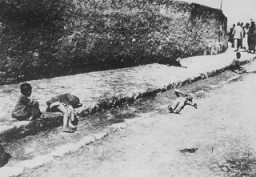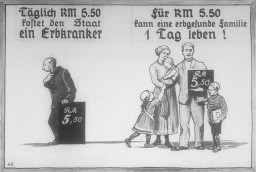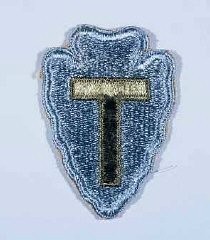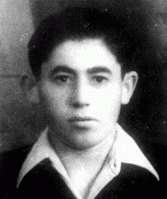You searched for: Jakob%20Universit?t%20Bremen%EF%BF%BD%EF%BF%BD%EF%BF%BD%EF%BF%BD%EF%BF%BD%EF%BF%BD%EF%BF%BD%EF%BF%BD%EF%BF%BD%EF%BF%BD%EF%BF%BD%EF%BF%BD%EF%BF%BD%EF%BF%BD%EF%BF%BD%EF%BF%BD%EF%BF%BD%EF%BF%BD%EF%BF%BD%EF%BF%BD%EF%BF%BD%EF%BF%BD%EF%BF%BD%EF%BF%BD%EF%BF%BD%EF%BF%BD%EF%BF%BD%EF%BF%BD%EF%BF%BD%EF%BF%BDCXFK69%EF%BF%BD%EF%BF%BD%EF%BF%BD86vqL
<< Previous | Displaying results 11-20 of 34 for "Jakob%20Universit?t%20Bremen%EF%BF%BD%EF%BF%BD%EF%BF%BD%EF%BF%BD%EF%BF%BD%EF%BF%BD%EF%BF%BD%EF%BF%BD%EF%BF%BD%EF%BF%BD%EF%BF%BD%EF%BF%BD%EF%BF%BD%EF%BF%BD%EF%BF%BD%EF%BF%BD%EF%BF%BD%EF%BF%BD%EF%BF%BD%EF%BF%BD%EF%BF%BD%EF%BF%BD%EF%BF%BD%EF%BF%BD%EF%BF%BD%EF%BF%BD%EF%BF%BD%EF%BF%BD%EF%BF%BD%EF%BF%BDCXFK69%EF%BF%BD%EF%BF%BD%EF%BF%BD86vqL" | Next >>
-
Armenian children lie in the street of an unidentified town
PhotoArmenian children lie in the street of an unidentified town. Photograph taken by Armin T. Wegner. Wegner served as a nurse with the German Sanitary Corps. In 1915 and 1916, Wegner traveled throughout the Ottoman Empire and documented atrocities carried out against the Armenians. [Courtesy of Sybil Stevens (daughter of Armin T. Wegner). Wegner Collection, Deutsches Literaturarchiv, Marbach & United States Holocaust Memorial Museum.]

-
Armenian families in a refugee camp
PhotoArmenian families next to makeshift tents in a refugee camp. Ottoman Empire, 1915-16.Photograph taken by Armin T. Wegner. Wegner served as a nurse with the German Sanitary Corps. In 1915 and 1916, Wegner traveled throughout the Ottoman Empire and documented atrocities carried out against the Armenians. [Courtesy of Sybil Stevens (daughter of Armin T. Wegner). Wegner Collection, Deutsches Literaturarchiv, Marbach & United States Holocaust Memorial Museum.]

-
Armenian deportees
PhotoA small group of Armenian deportees walking through the Taurus Mountain region, carrying bundles. A woman in the foreground carries a child. Ottoman Empire, ca. November 1915. Photograph taken by Armin T. Wegner. Wegner served as a nurse with the German Sanitary Corps. In 1915 and 1916, Wegner traveled throughout the Ottoman Empire and documented atrocities carried out against the Armenians. [Courtesy of Sybil Stevens (daughter of Armin T. Wegner). Wegner Collection, Deutsches Literaturarchiv, Marbach…

-
Final Solutions: Murderous Racial Hygiene, 1939–1945
ArticleBased on their ideas about race, the Nazis mass murdered people with disabilities; people perceived as threats in occupied Poland; and Jewish people. Learn more.

-
The Murder of People with Disabilities
ArticleAt the beginning of WWII, people with mental or physical disabilities were targeted for murder in what the Nazis called the T-4, or "euthanasia," program.

-
Red triangle patch worn by a Czech political prisoner
PhotoRed triangle patch worn by Czech political prisoner Karel Bruml in Theresienstadt. The letter "T" stands for "Tscheche" (Czech in German).

-
Insignia of the 90th Infantry Division
PhotoInsignia of the 90th Infantry Division. Called the "Tough Ombres," the 90th Infantry Division was raised from draftees from the states of Texas and Oklahoma during World War I. The divisional insignia incorporates the letters "T" and "O" to symbolize both states. These letters later yielded the nickname "Tough Ombres," symbolizing the esprit de corps of the unit. The 90th was also sometimes called the "Alamo" division during World War II.

-
Insignia of the 36th Infantry Division
PhotoInsignia of the 36th Infantry Division. The 36th Infantry Division, the "Texas" division, was raised from National Guard units from Texas and Oklahoma during World War I. The "T" in the division's insignia represents Texas, the arrowhead Oklahoma. The division was also sometimes called the "Lone Star" division, again symbolizing its Texas roots.

-
Chaim Frenkiel
ID CardChaim was the third of seven boys born to religious Jewish parents. They lived in a town near Warsaw called Gabin, where Chaim's father worked as a cap maker. Gabin had one of Poland's oldest synagogues, built of wood in 1710. Like most of Gabin's Jews, Chaim's family lived close to the synagogue. The family of nine occupied a one-room apartment on the top floor of a three-story building. 1933-39: In September 1939, two months before Chaim was 12, Germany invaded Poland. In Gabin 10 people were shot in…

-
The 36th Infantry Division during World War II
ArticleThe 36th Infantry Division participated in major WWII campaigns and is recognized for liberating some of the Kaufering subcamps of Dachau in 1945.
